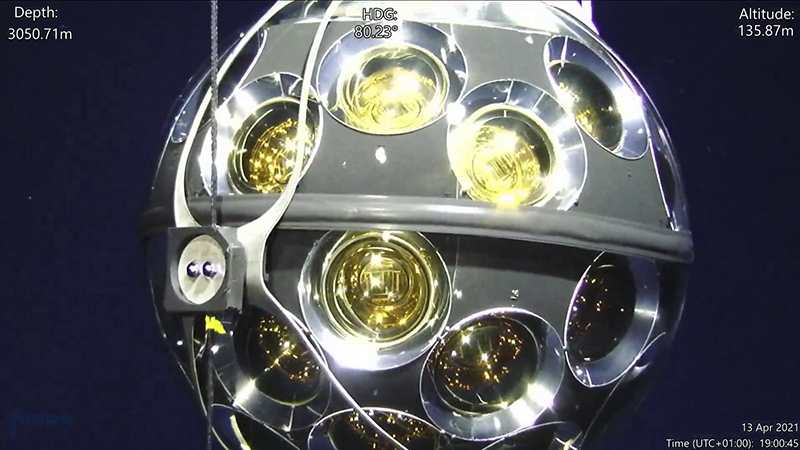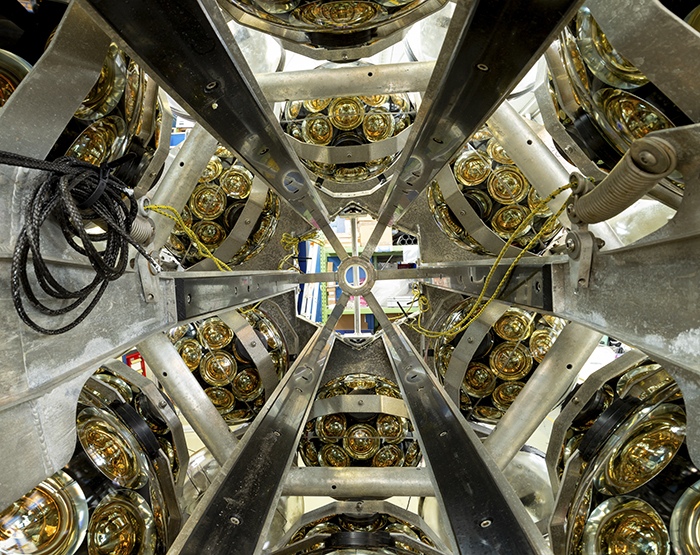
The Deep-Sea Revelation: KM3NeT Detects the Most Energetic Neutrino Ever Observed
Beneath the vast, undulating surface of the Mediterranean Sea, a silent observer has been watching the cosmos with unwavering patience. On February 13, 2023, that observer—KM3NeT, the cubic-kilometer neutrino telescope—detected something extraordinary: a cosmic ghost, a particle with energy so immense it challenges our very understanding of the universe’s most violent phenomena. This event, named KM3-230213A, marks the highest-energy neutrino ever observed, an astonishing 220 petaelectronvolts (PeV)—220 million billion electron volts. After meticulous data analysis, the KM3NeT Collaboration has now announced this unprecedented discovery to the world, with details published in Nature on February 12, 2025.
This detection is not just a breakthrough; it is a paradigm shift. For the first time, there is concrete evidence that neutrinos of such extreme energy are produced somewhere in the cosmos. This elusive particle’s journey across the universe, undisturbed for untold millennia, now offers us a rare glimpse into the depths of high-energy astrophysics.
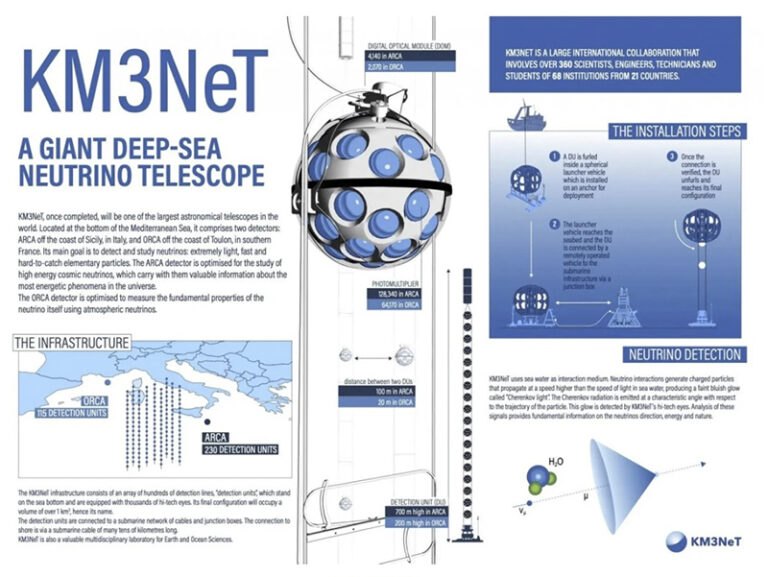
A Cosmic Messenger from the Abyss
Neutrinos, often called “ghost particles”, are among the most enigmatic constituents of the universe. They carry no electric charge, interact only weakly with matter, and can traverse entire galaxies without deviation. Their near-invisibility makes them a challenge to study, but also grants them a unique advantage—they reach us unscathed, bearing pristine information about their origins.
The story of KM3-230213A is one of extremes: extreme distance, extreme energy, and extreme implications. This neutrino’s estimated energy surpasses the capabilities of any human-made particle accelerator, including CERN’s Large Hadron Collider (LHC). It likely originated in one of the universe’s most ferocious astrophysical environments—perhaps near a supermassive black hole, a gamma-ray burst, or even from the distant echoes of the Big Bang itself, in the form of a long-theorized but never-before-seen cosmogenic neutrino.
“KM3NeT has begun to probe a new frontier where neutrinos may come from the most extreme astrophysical phenomena,” explains Paschal Coyle, KM3NeT Spokesperson at the time of detection and researcher at CNRS Centre National de la Recherche Scientifique in France. “This first-ever detection of a neutrino in the hundreds of PeV range opens a new chapter in neutrino astronomy.”
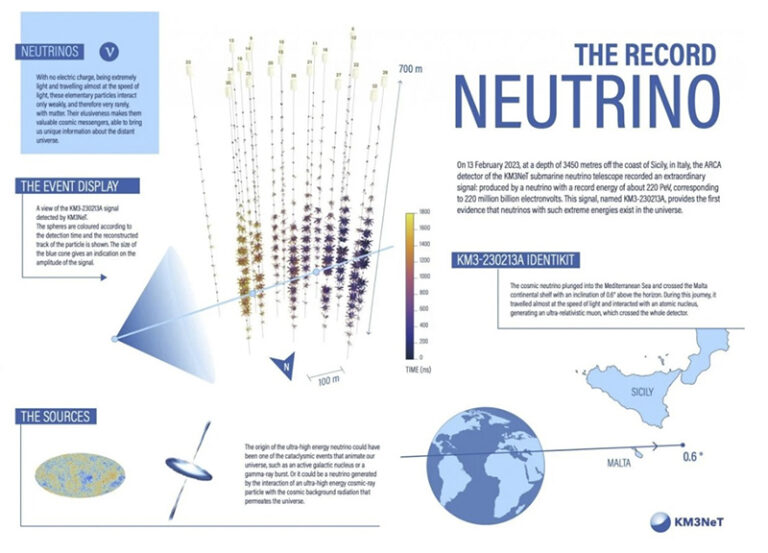
A Window into the High-Energy Universe
The universe at high energies is a place of cosmic fireworks—exploding stars, merging neutron stars, and feeding black holes that devour entire suns. These violent processes produce streams of high-energy particles, known as cosmic rays, which traverse the vastness of space. When these cosmic rays collide with matter or radiation, they generate secondary particles—among them, neutrinos.
However, not all neutrinos are created equal. Some emerge from known astrophysical sources, while others may be relics of the universe’s earliest epochs. The newly detected KM3-230213A neutrino could be the first glimpse of the long-sought cosmogenic neutrinos—particles generated when the most energetic cosmic rays interact with the cosmic microwave background radiation, the very afterglow of the Big Bang. If confirmed, this would be a scientific revolution, providing direct evidence of these ultra-high-energy interactions.
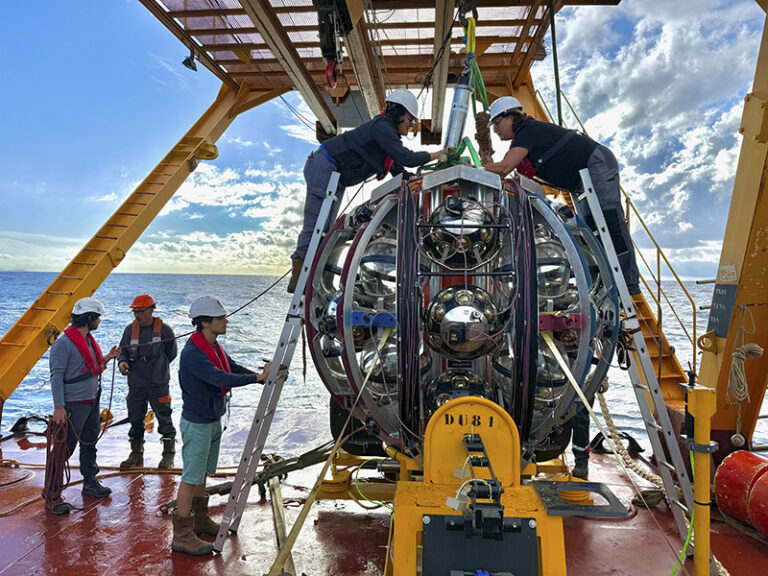
How KM3NeT Made the Discovery
The KM3NeT telescope, currently under construction, is an engineering masterpiece—an underwater labyrinth of ultra-sensitive detectors placed at crushing ocean depths of up to 3,450 meters. It is composed of two distinct arrays: ARCA, designed to study high-energy astrophysical neutrinos, and ORCA, focused on fundamental neutrino properties.
Using the natural shielding of deep-sea water, KM3NeT detects neutrinos indirectly. When a high-energy neutrino collides with a particle inside or near the detector, it produces a charged secondary particle—often a muon—that then speeds through the water at superluminal speeds, emitting Cherenkov radiation. This eerie blue light is captured by high-tech optical modules, allowing scientists to reconstruct the neutrino’s energy and trajectory.
The KM3-230213A neutrino, in particular, triggered signals in more than one-third of KM3NeT’s active sensors, its trajectory unmistakably inclined, confirming its cosmic origins.
“To determine the direction and energy of this neutrino required precise calibration of the telescope and sophisticated track reconstruction algorithms,” explains Aart Heijboer, KM3NeT Physics and Software Manager and researcher at Nikhef National Institute for Subatomic Physics in the Netherlands. “This remarkable detection was achieved with only one-tenth of the telescope’s final configuration, demonstrating the immense potential of KM3NeT for the future of neutrino astronomy.”
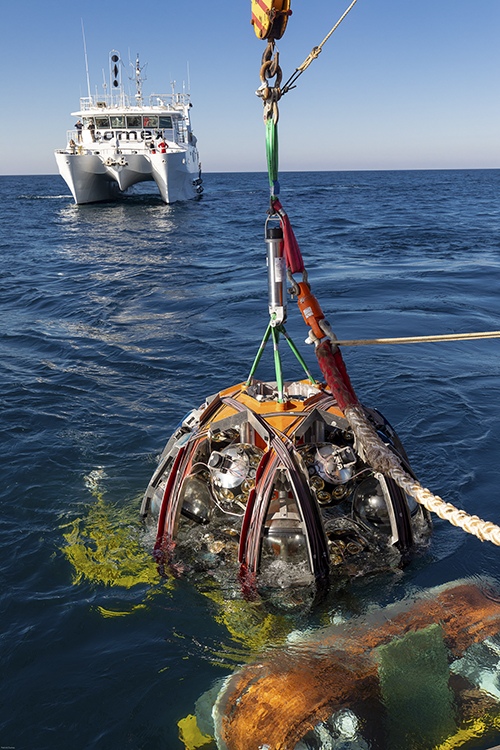
A Monumental Achievement in Multi-Messenger Astronomy
This discovery is not just about neutrinos—it is a vital step in the growing field of multi-messenger astronomy, an approach that combines neutrino detections with signals from gravitational waves, gamma rays, and cosmic rays to paint a more complete picture of the universe.
“The detection of this event is the result of a tremendous collaborative effort between engineers, technicians, and scientists from around the world,” says Miles Lindsey Clark, KM3NeT Technical Project Manager at the CNRS Astroparticle and Cosmology Laboratory in France.
Future detections will be critical. One event alone cannot determine whether KM3-230213A is a signature of a powerful cosmic accelerator or the first whisper of a cosmogenic neutrino. But as KM3NeT expands, adding more detection units and refining its methods, its ability to pinpoint the sources of cosmic neutrinos will become unparalleled.
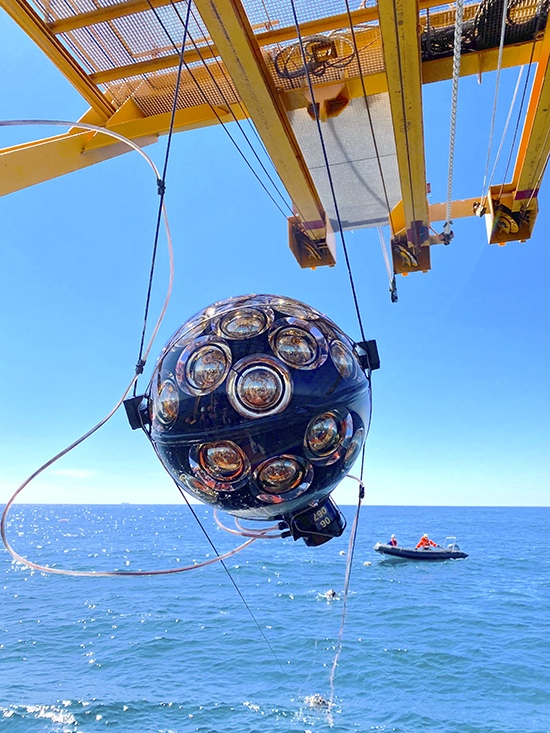
Looking Forward: The Next Era of Neutrino Astronomy
When complete, KM3NeT will span one cubic kilometer, containing nearly 200,000 photomultiplier tubes to capture the elusive flashes of Cherenkov radiation. It will be a beacon in the depths, listening for the ghostly echoes of the universe’s most energetic phenomena.
The road ahead is as exciting as it is challenging. With each detection, we move closer to unraveling the origins of cosmic rays, the nature of extreme astrophysical environments, and perhaps even the secrets of the early universe itself.
As we stand on the precipice of discovery, one thing is clear: the deep sea, once thought to be a realm of silence, has become a gateway to the cosmos. The hunt for the next great cosmic ghost is only just beginning.
